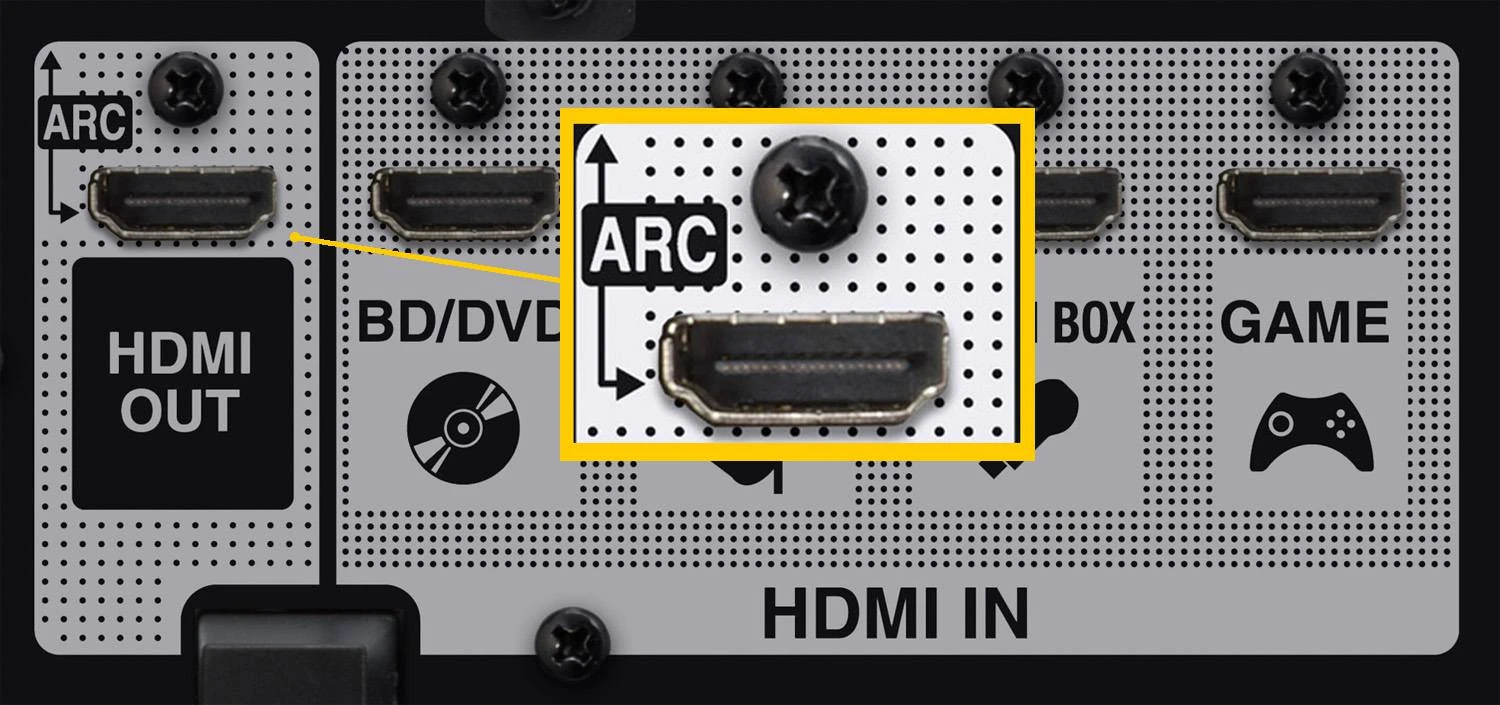If you've ever peered at the back of your television, you've likely noticed an unassuming HDMI port labeled "ARC." But have you ever wondered what exactly it's for? Surprisingly, it holds a unique and essential role in your home entertainment setup. In this article, we'll delve into the world of HDMI ARC (Audio Return Channel) and uncover its potential, along with a few caveats.
What Is HDMI ARC?
To put it simply, HDMI ARC is a technology that enables your TV to send an audio signal back down the HDMI cable to an AV receiver or external speakers, such as a soundbar. This functionality is particularly relevant when you're using external audio sources instead of relying on the built-in speakers of your TV. The reason for this is twofold.
First, the built-in speakers of modern TVs are often limited in sound quality due to their small size, which must fit within the slim profiles of today's televisions. Second, TV manufacturers typically prioritize picture quality over sound quality. Consequently, many people opt for external speakers, making HDMI ARC a valuable feature.
Without HDMI ARC, you would need at least one additional cable to transmit sound from your TV to your external speakers, especially when watching content originating from the TV itself. This applies to scenarios like watching over-the-air channels with an antenna or using built-in Smart TV apps for streaming content.
Of course, if you've connected external sources like streaming devices, cable boxes, Blu-ray players, or game consoles directly to your TV and are using a soundbar instead of a full home theater system with a receiver, you'd still need a cable to connect your TV to the soundbar. HDMI ARC, however, remains useful, as the latest iteration, known as e-ARC, can carry 32 channels of uncompressed audio. This capability allows it to work seamlessly with advanced audio technologies like Dolby Atmos and DTS:X, which Toslink and RCA cables cannot support.
If you possess a soundbar capable of passing through HDMI video signals from multiple external devices, you can conveniently connect everything to the soundbar. This setup requires just a single HDMI cable running from the soundbar to your TV, allowing you to harness the power of HDMI ARC as you would with a traditional AV receiver.
When HDMI ARC Might Not Be Your Best Choice
While HDMI ARC offers numerous advantages, it's important to note that there are situations where you might want to reconsider using it.
One significant issue with HDMI ARC is its frequent association with Consumer Electronics Control (CEC). CEC is a feature that, in theory, simplifies your entertainment system by allowing you to control multiple devices with a single remote. It can automatically adjust volume levels, power devices on or off, and switch inputs as needed. However, the problem arises when different manufacturers implement CEC in varying ways, leading to compatibility issues.
These issues can manifest as power interruptions when you don't want them, incorrect audio output sources, or other bizarre behaviors. Despite CEC and HDMI ARC being distinct features, some TV manufacturers design their software in a way that disabling one also disables the other. This confluence of factors has resulted in CEC-related glitches becoming a common frustration for those using HDMI ARC.
If you have a straightforward audio setup that deals with stereo sound or conventional 5.1 channel surround sound, you may want to consider using additional cables like Toslink or RCA instead of HDMI ARC. Another alternative for the technically inclined is to retain HDMI ARC and disable CEC by covering pin 13 on the HDMI cable, although this approach should be undertaken with caution.
In conclusion, HDMI ARC is a powerful tool for enhancing your home entertainment experience. It simplifies audio transmission, reduces cable clutter, and supports advanced audio technologies. However, it's essential to be aware of potential CEC-related glitches and explore alternatives when necessary. By understanding the ins and outs of HDMI ARC, you can make informed decisions to optimize your audio setup.


No comments yet